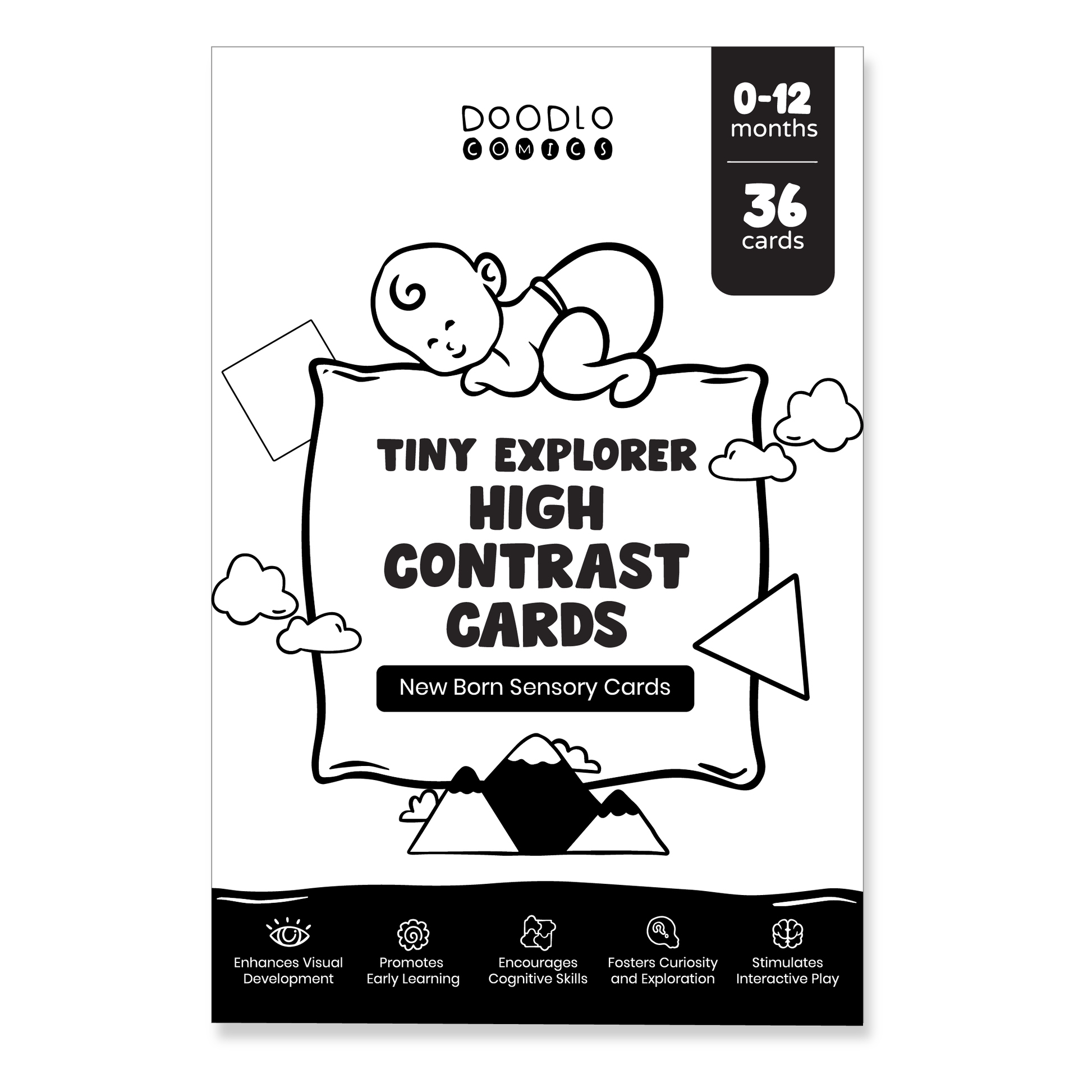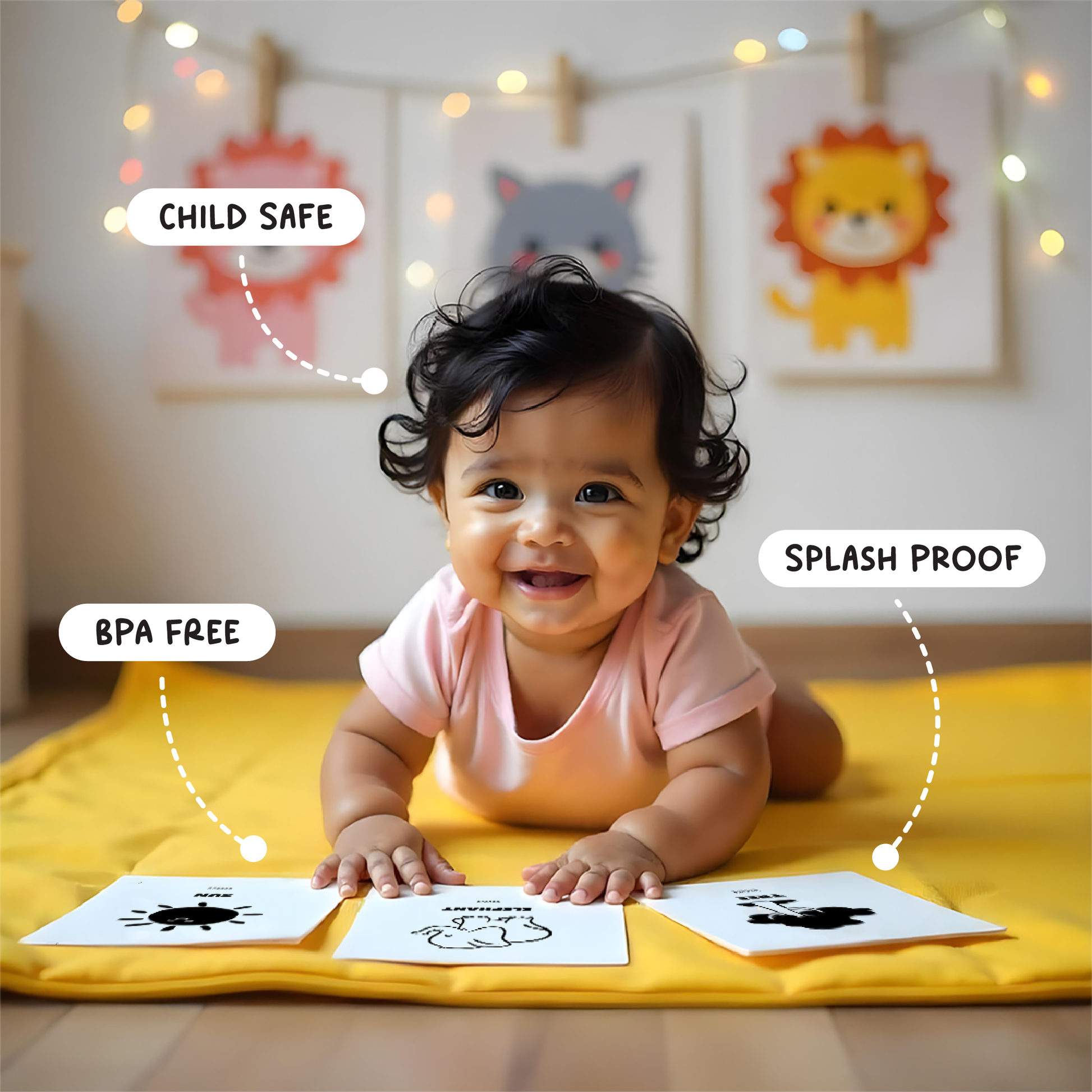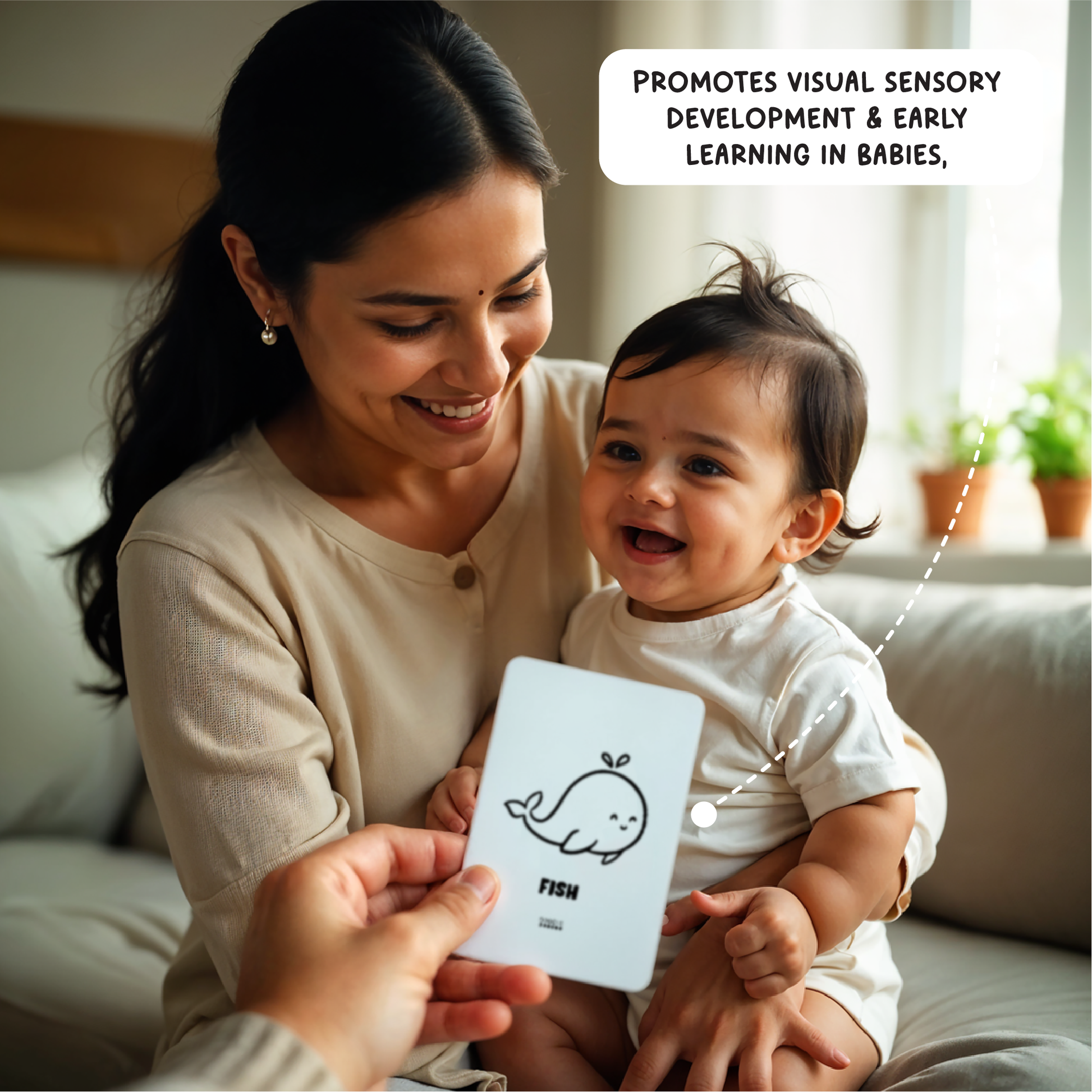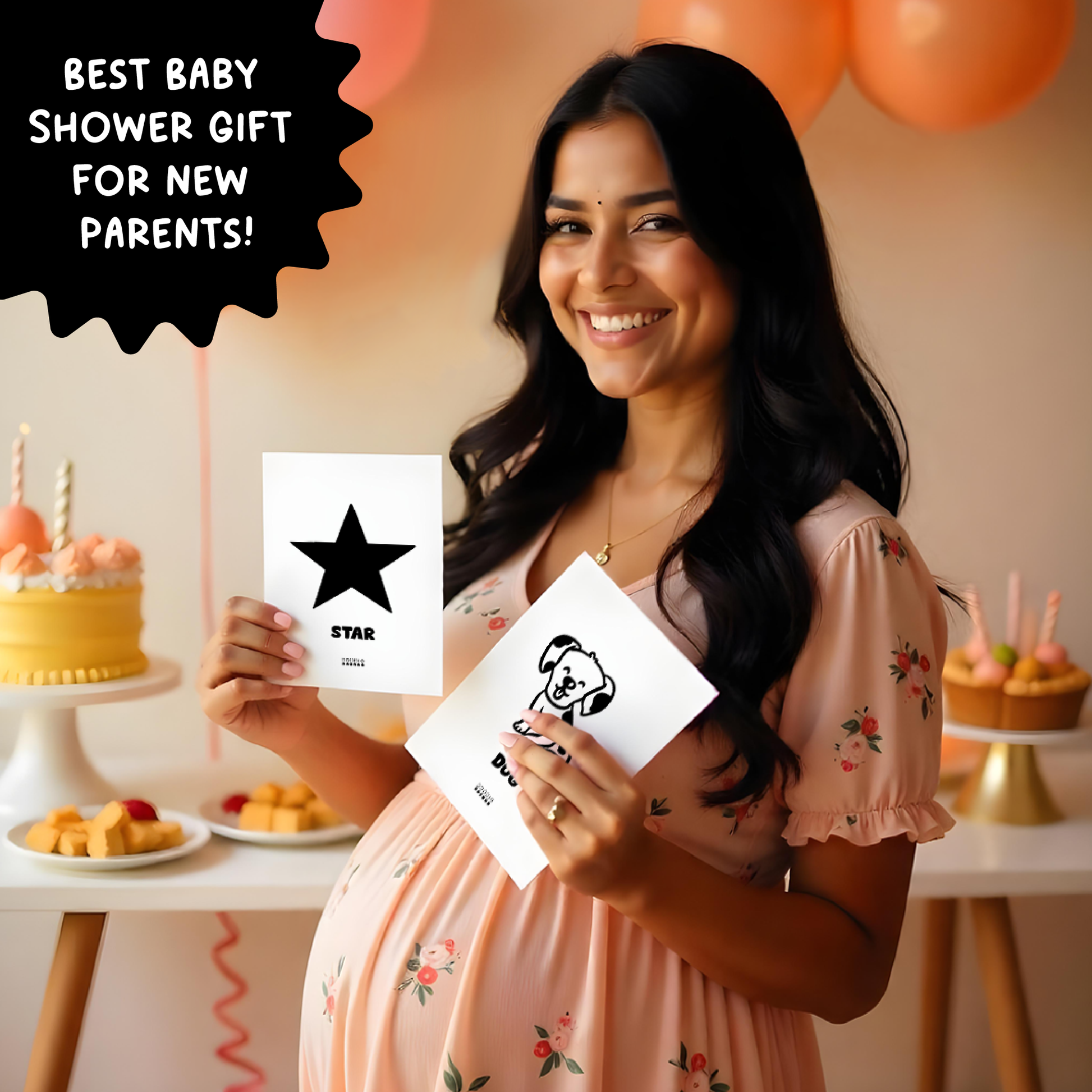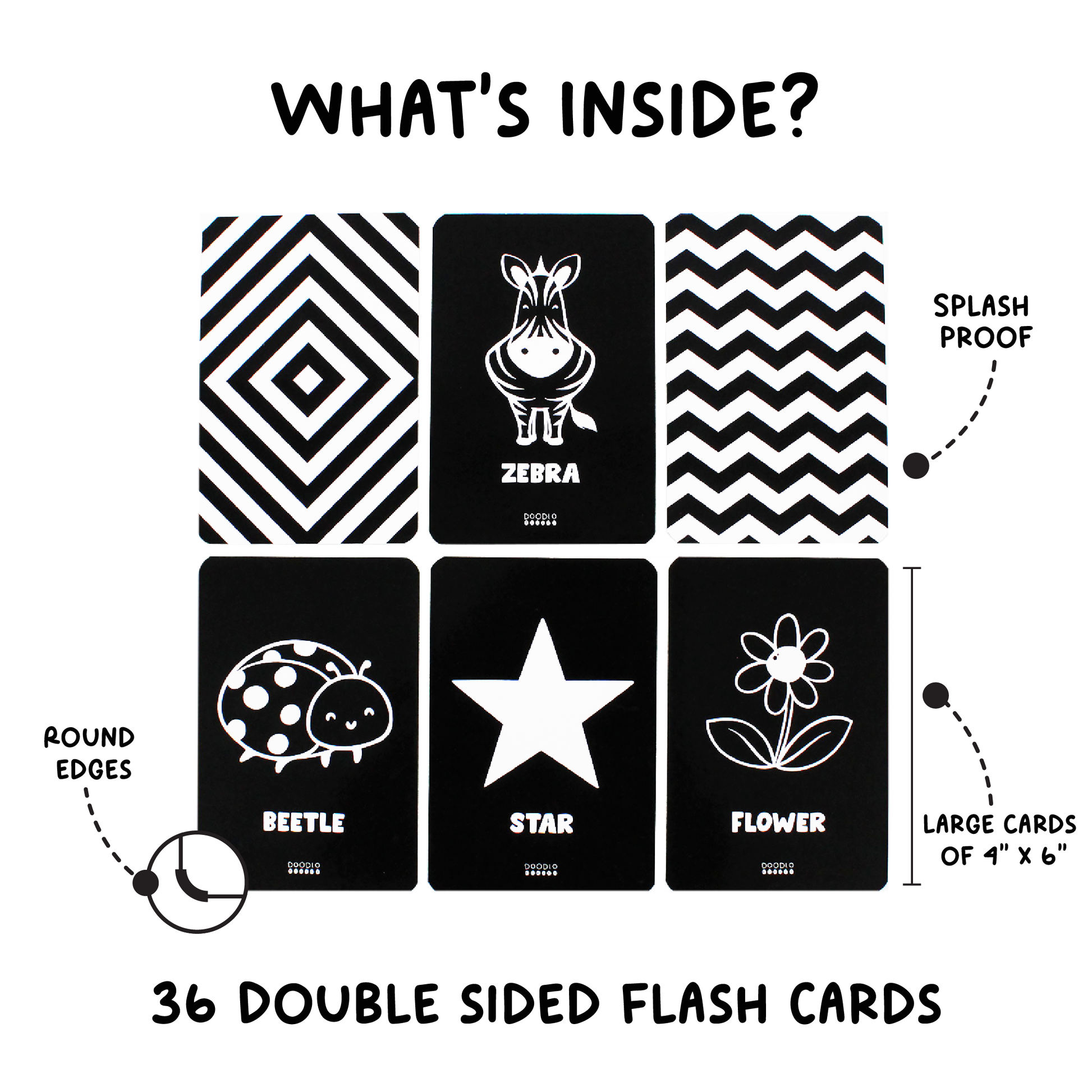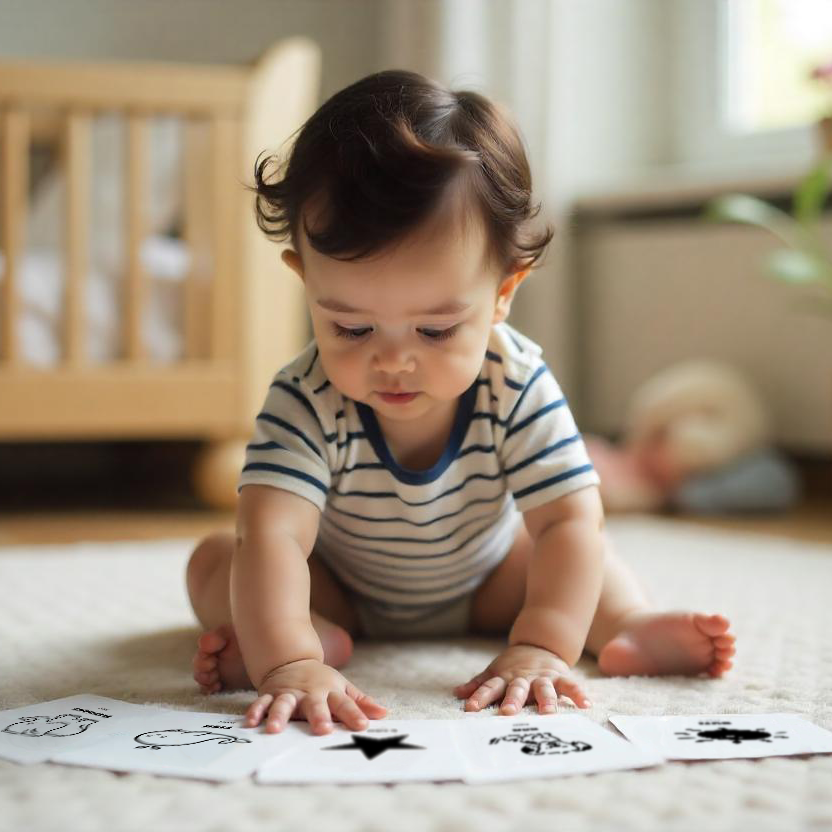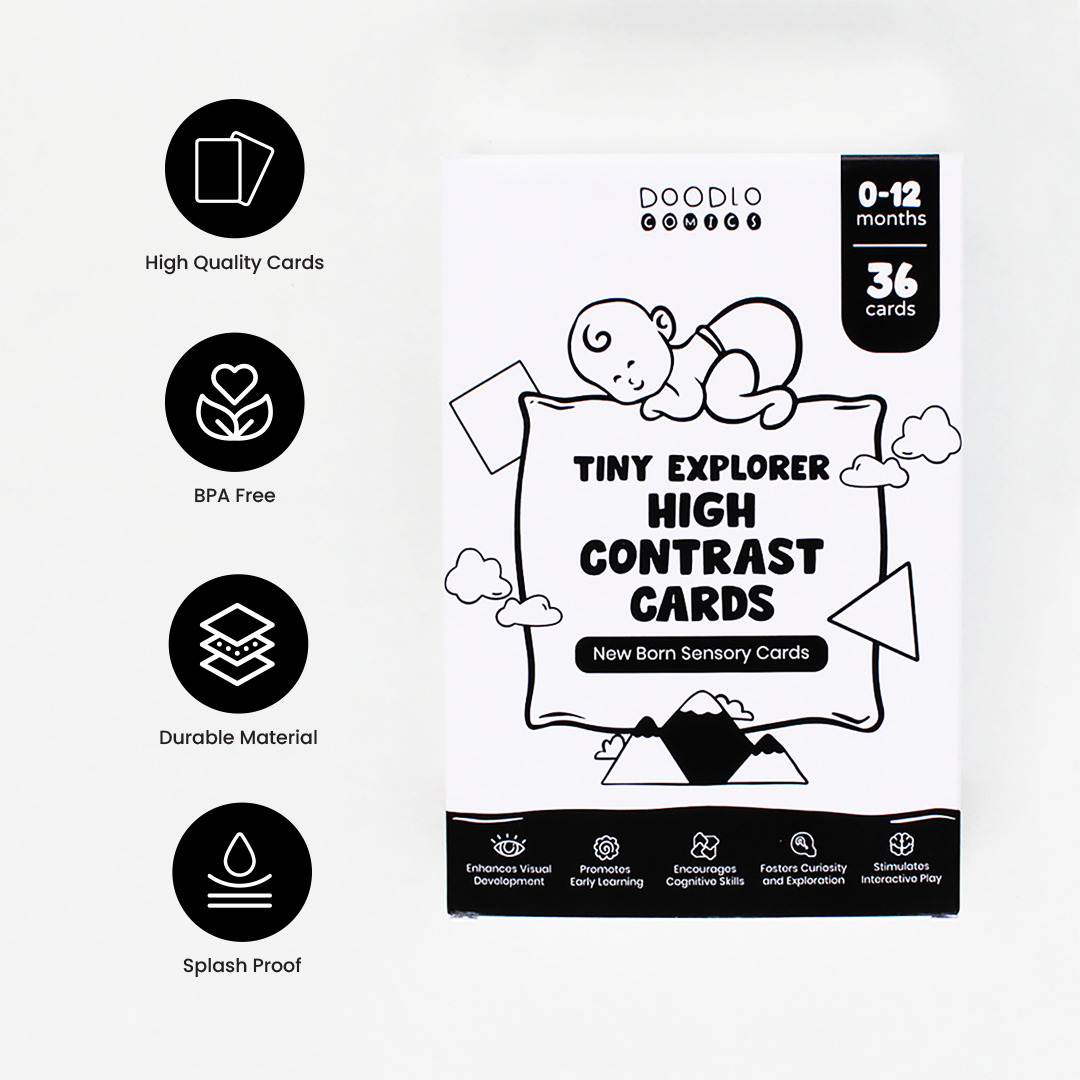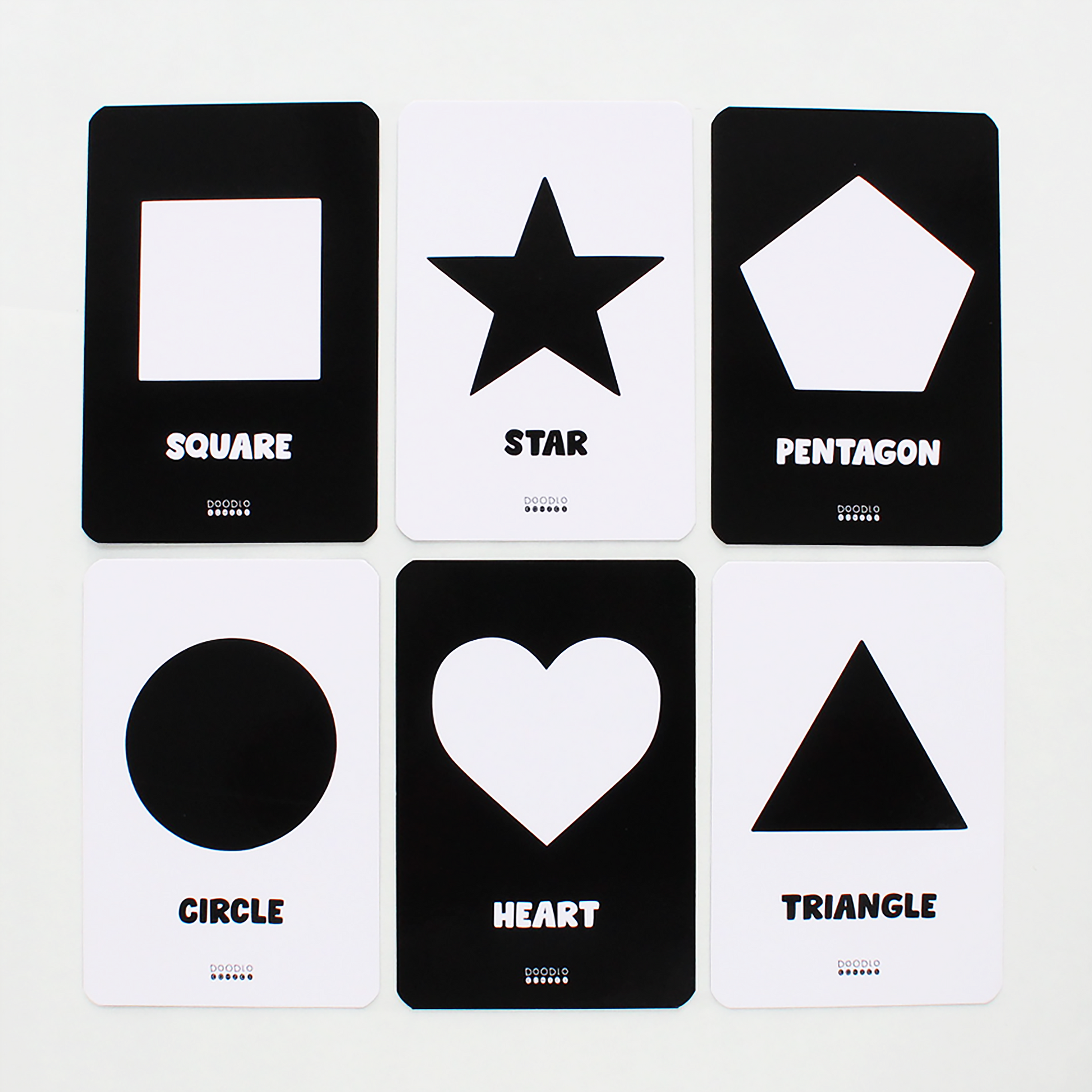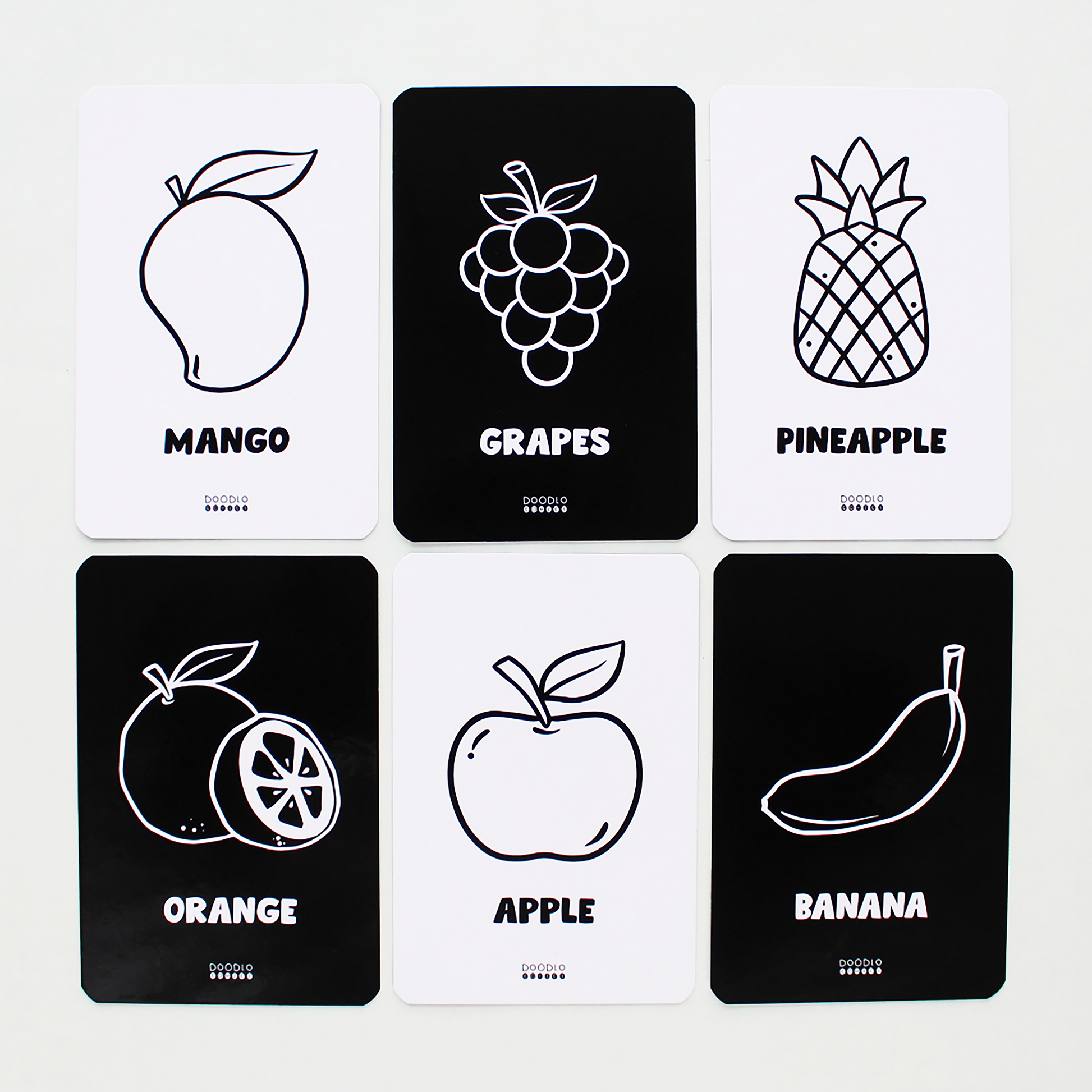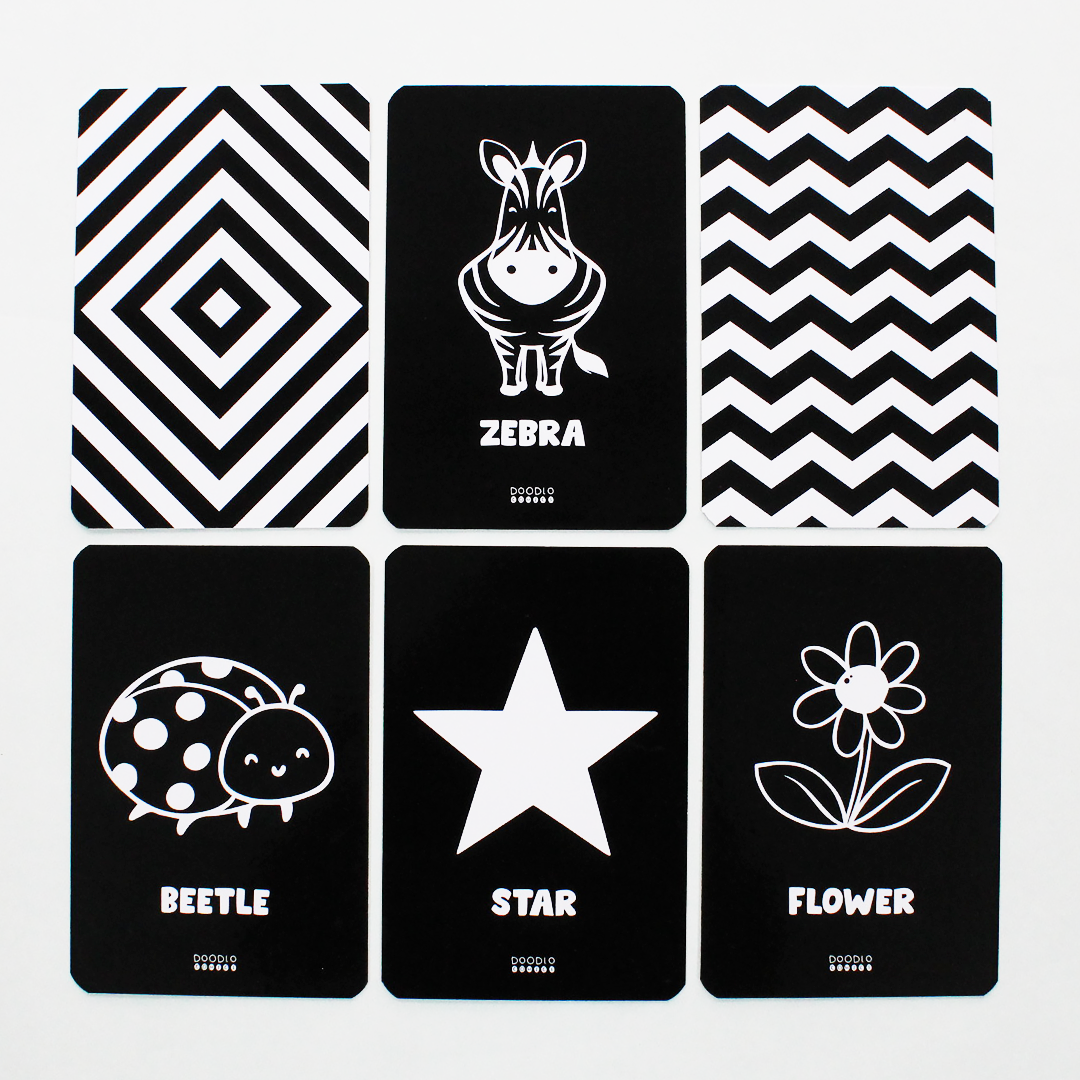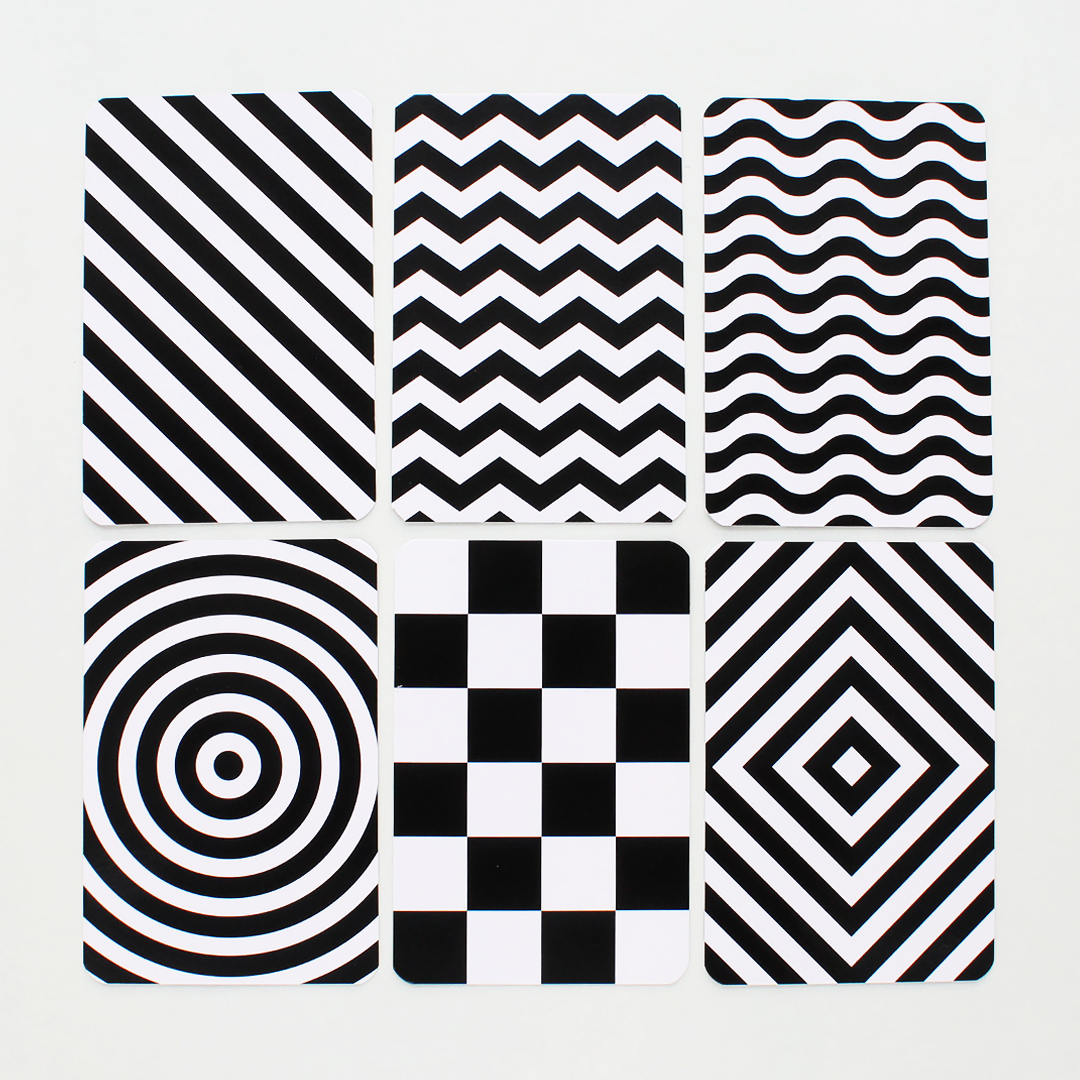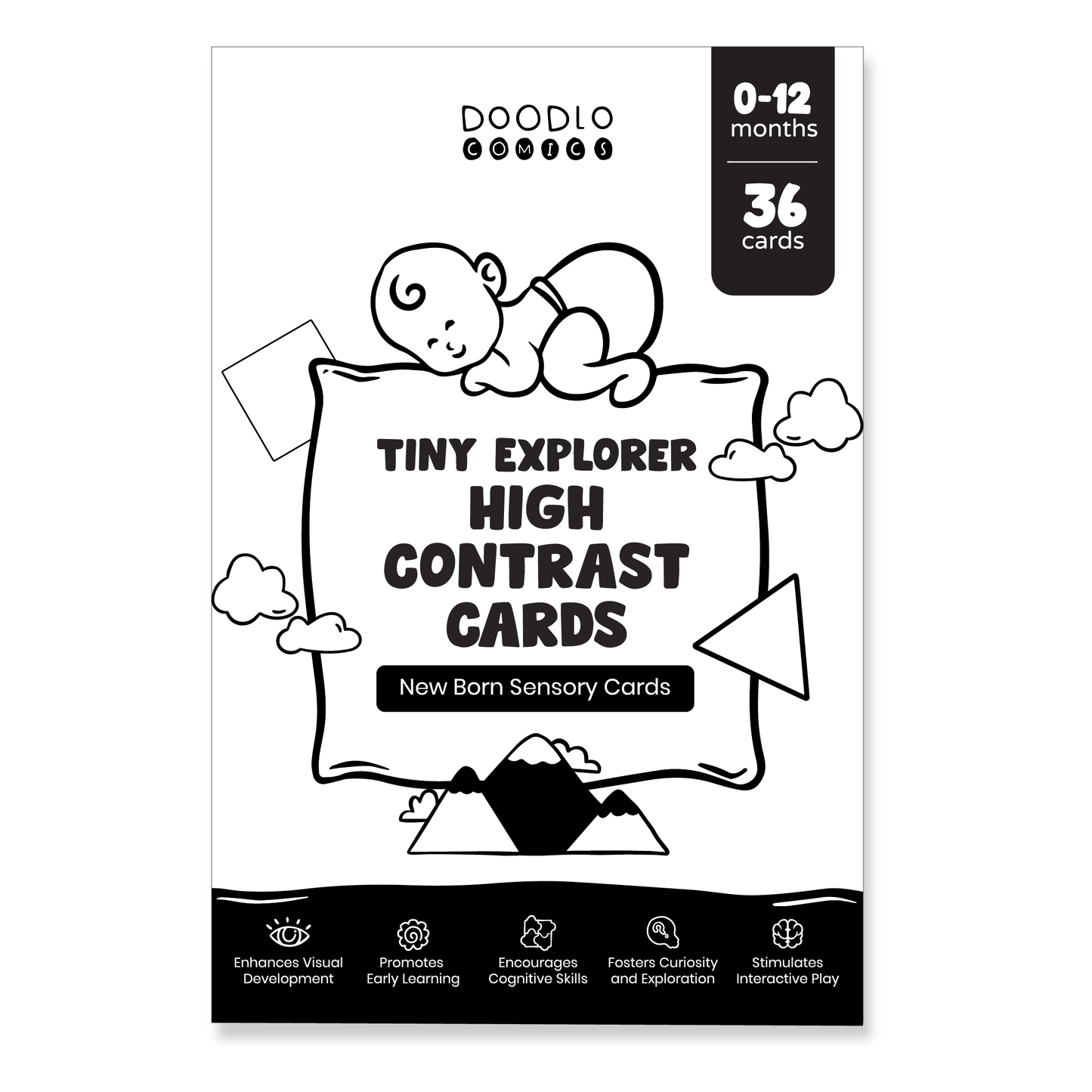
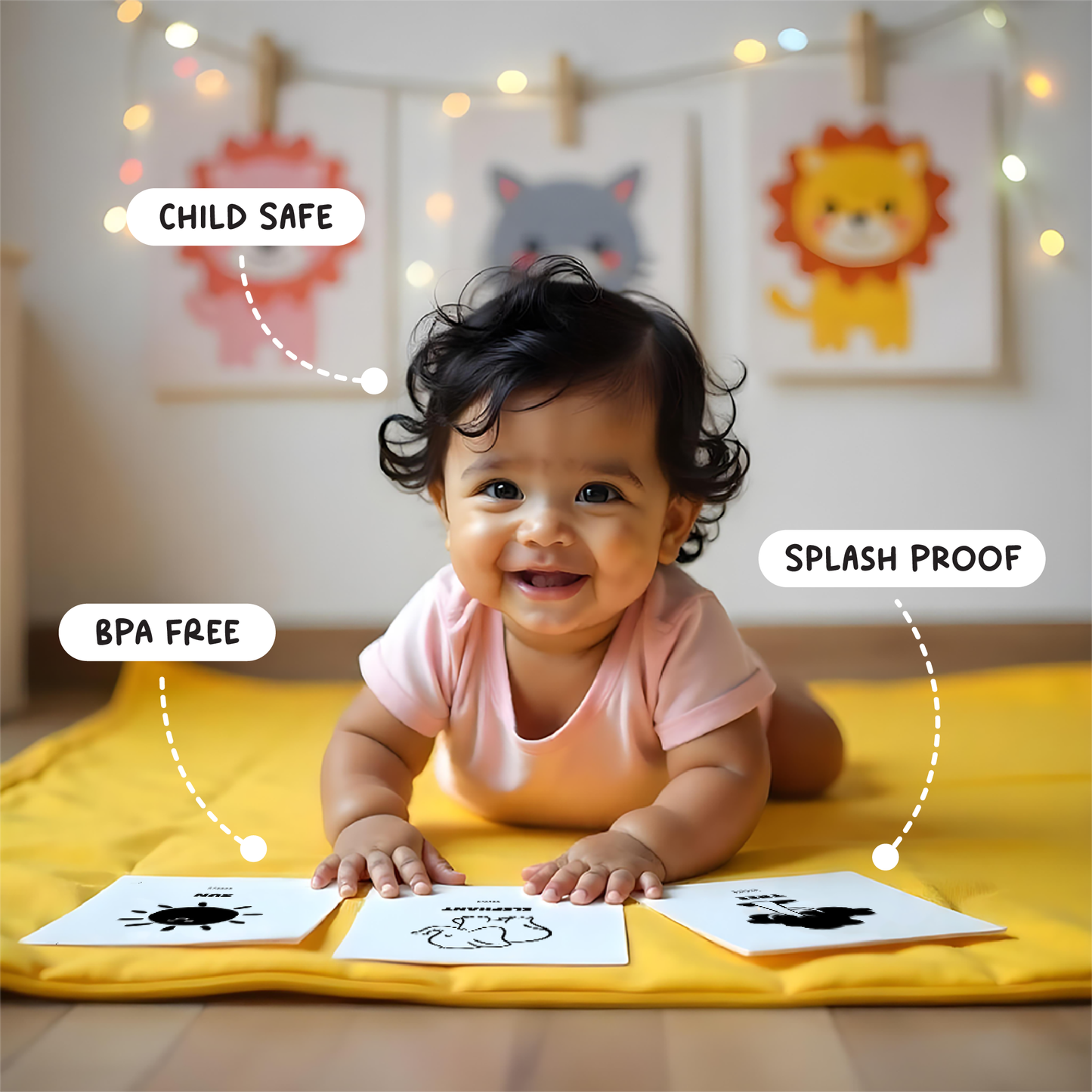
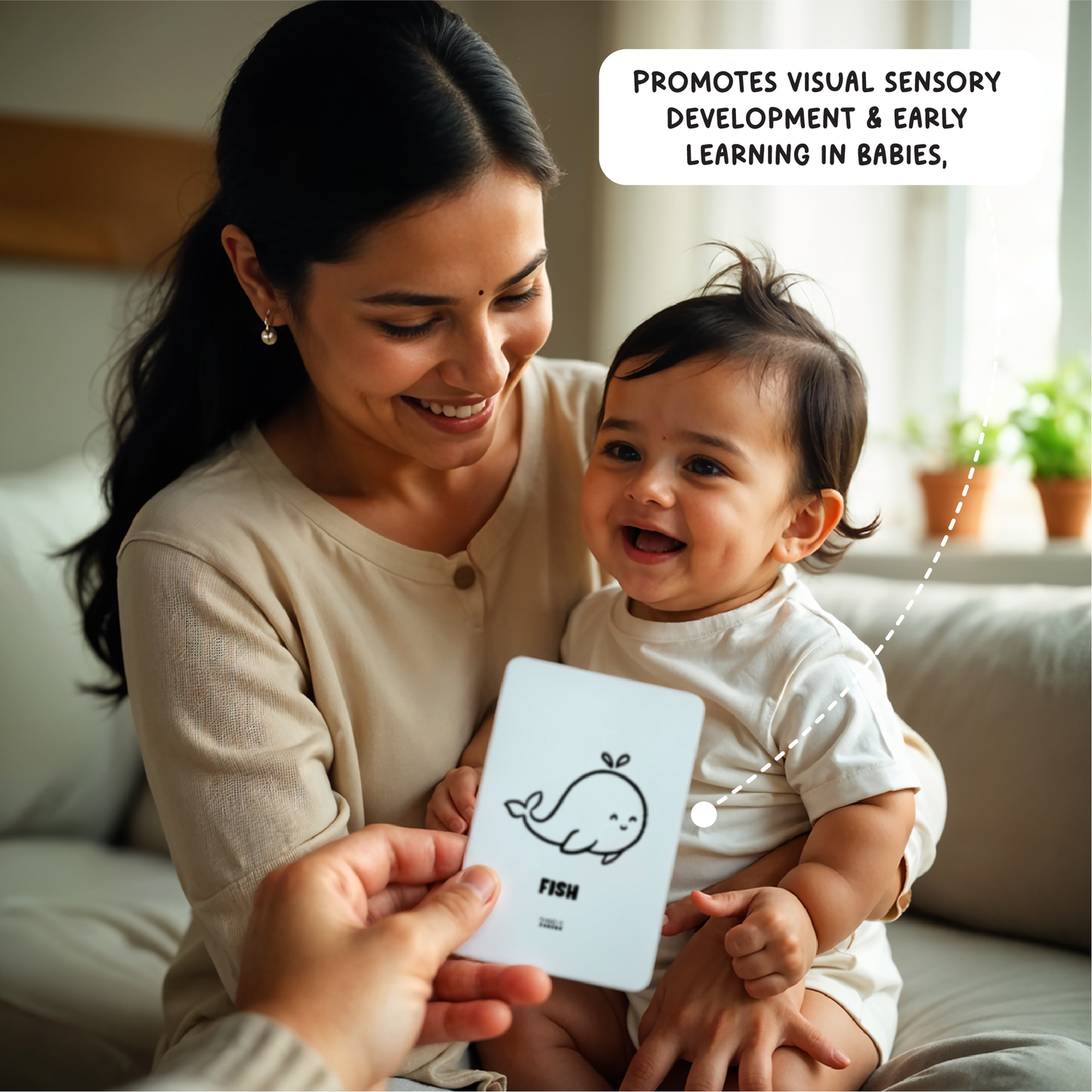
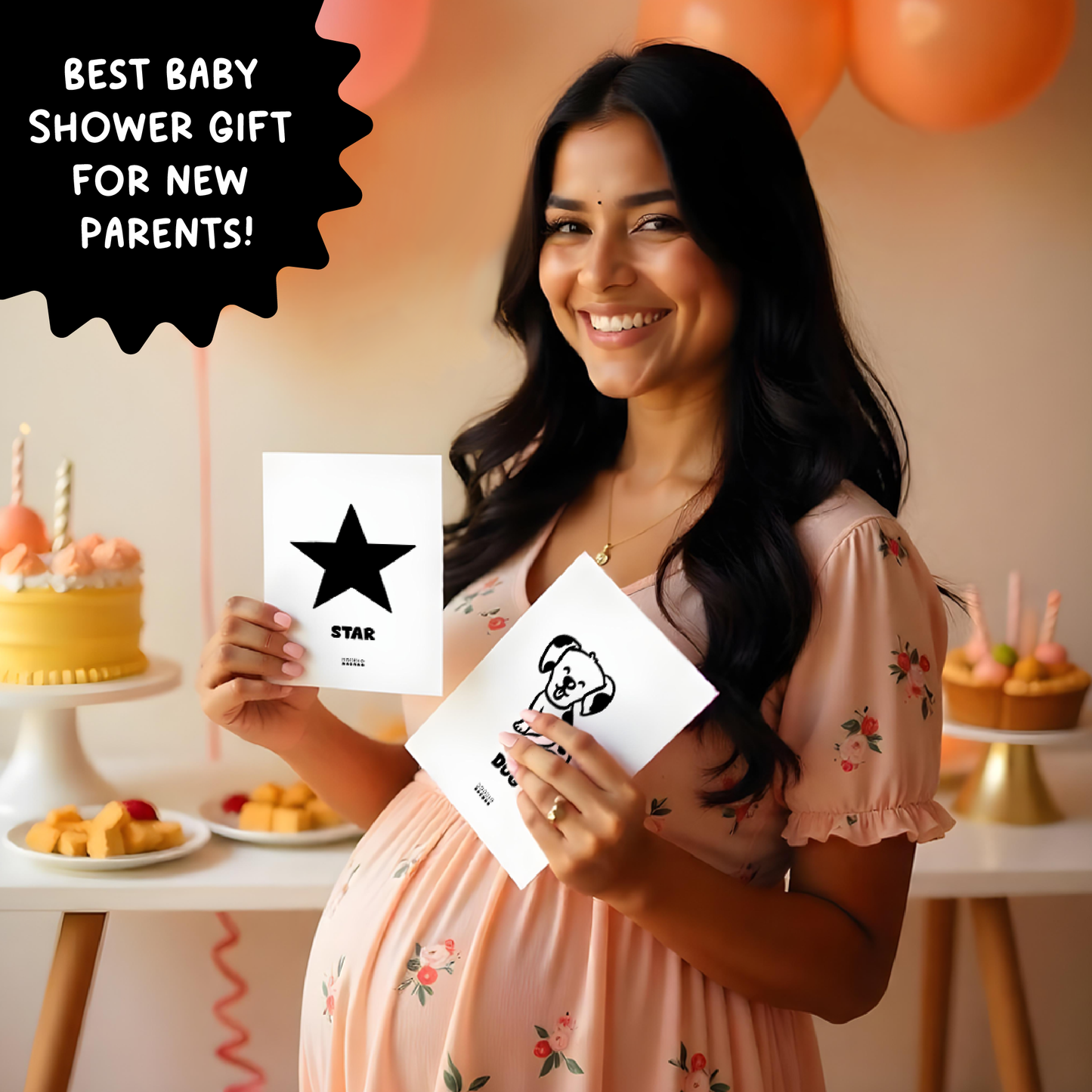
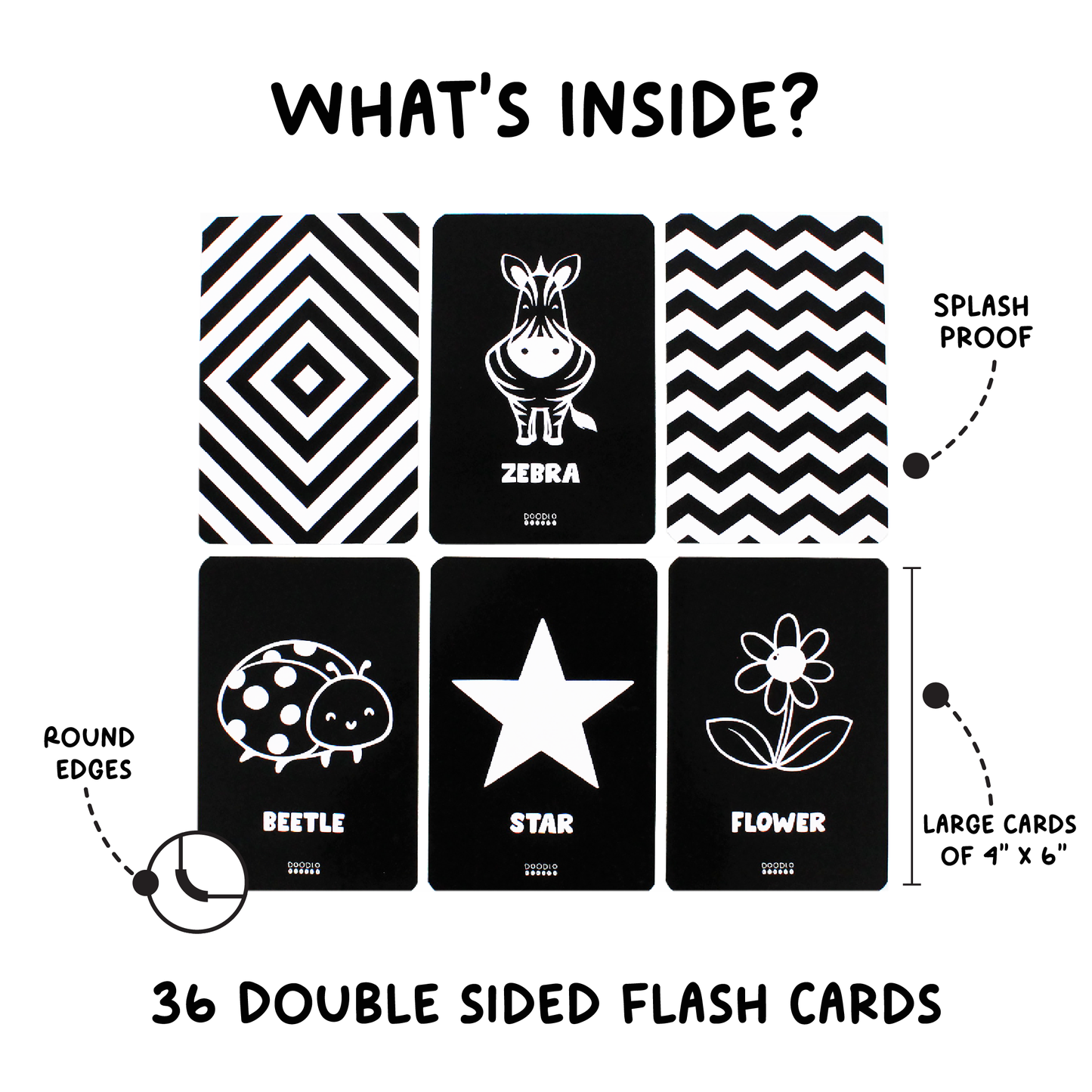
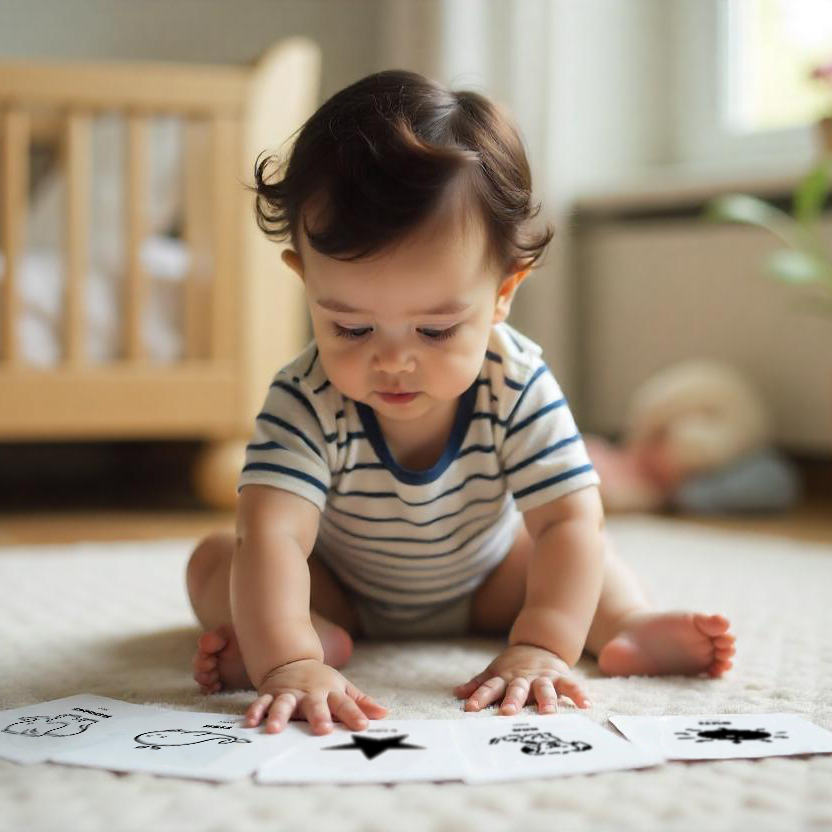
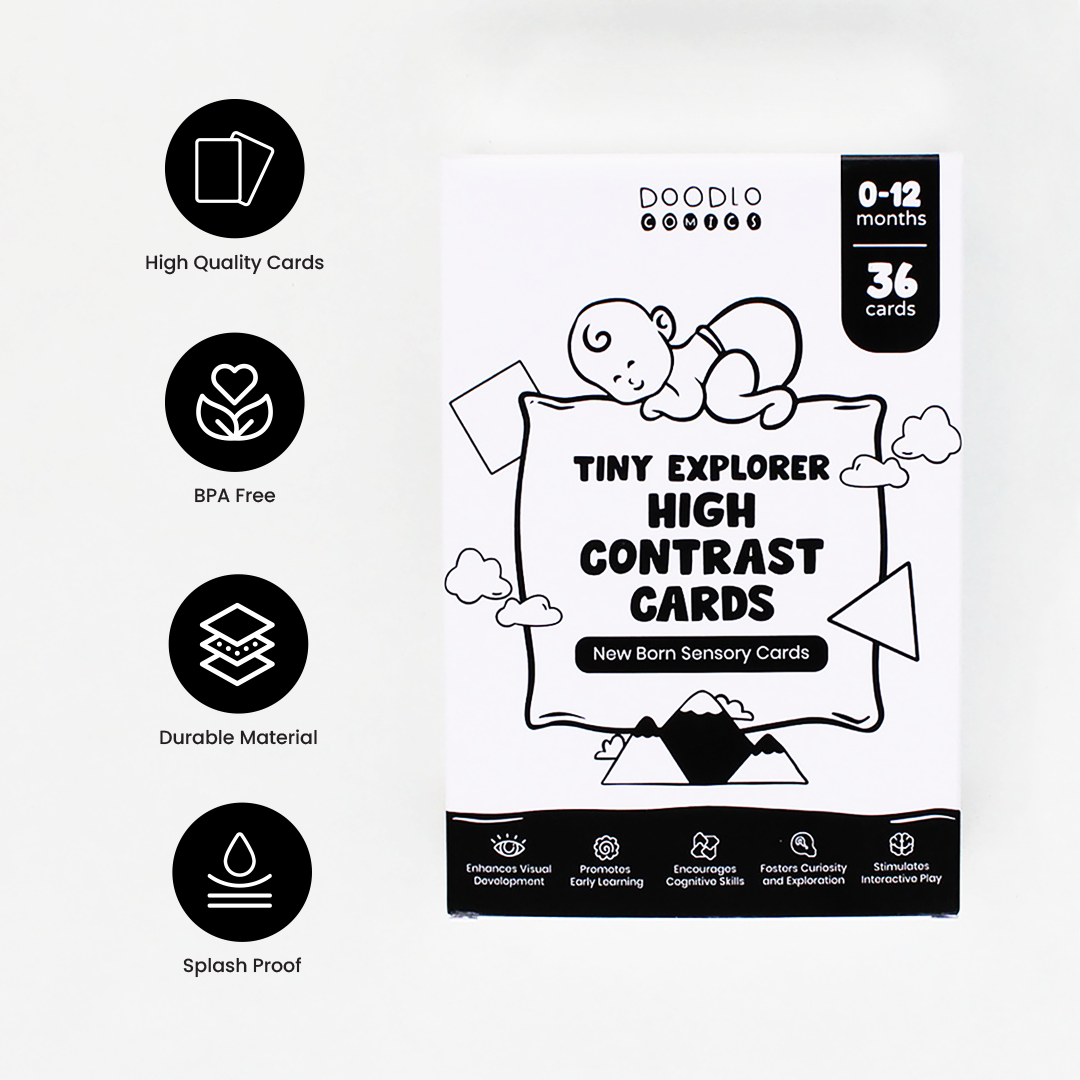
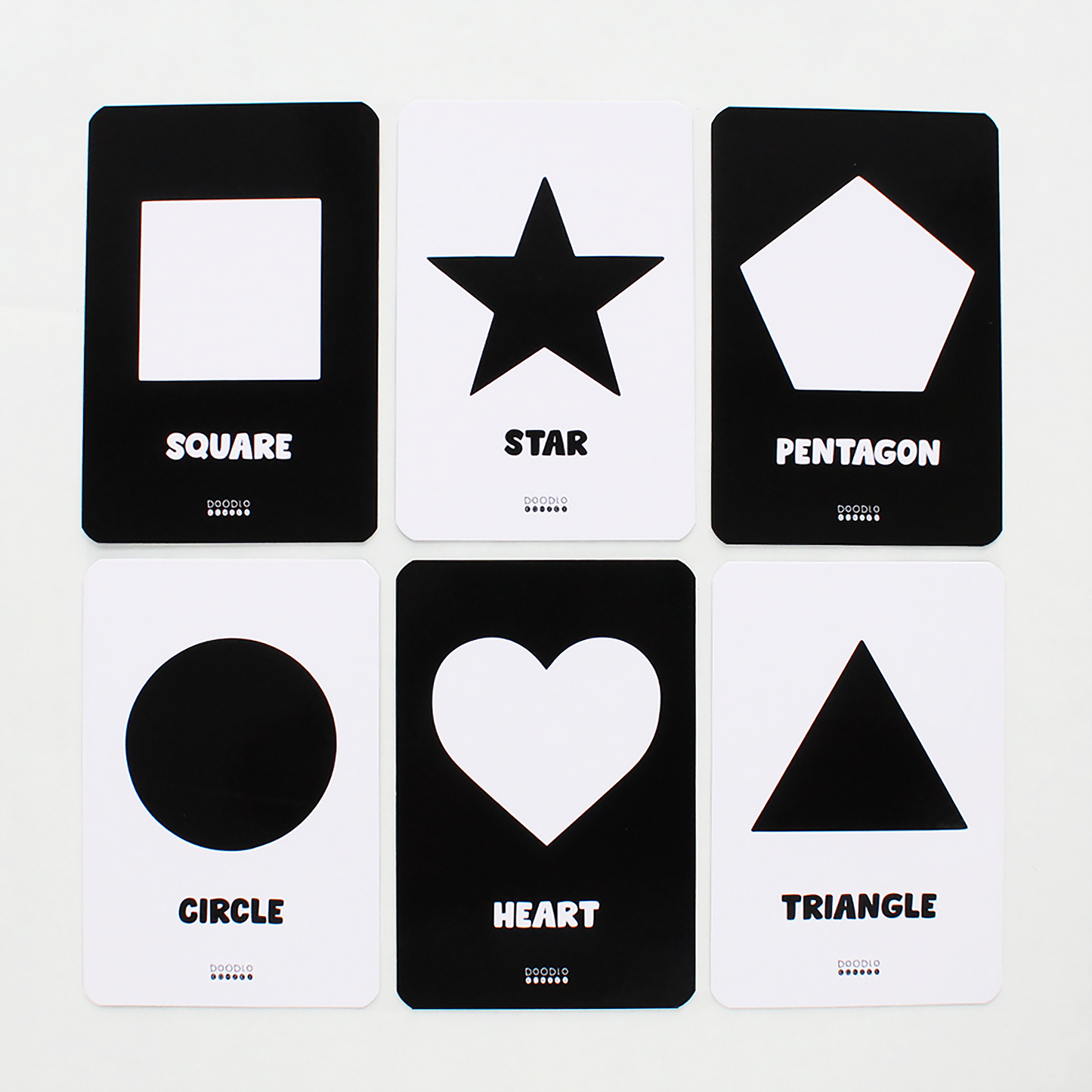
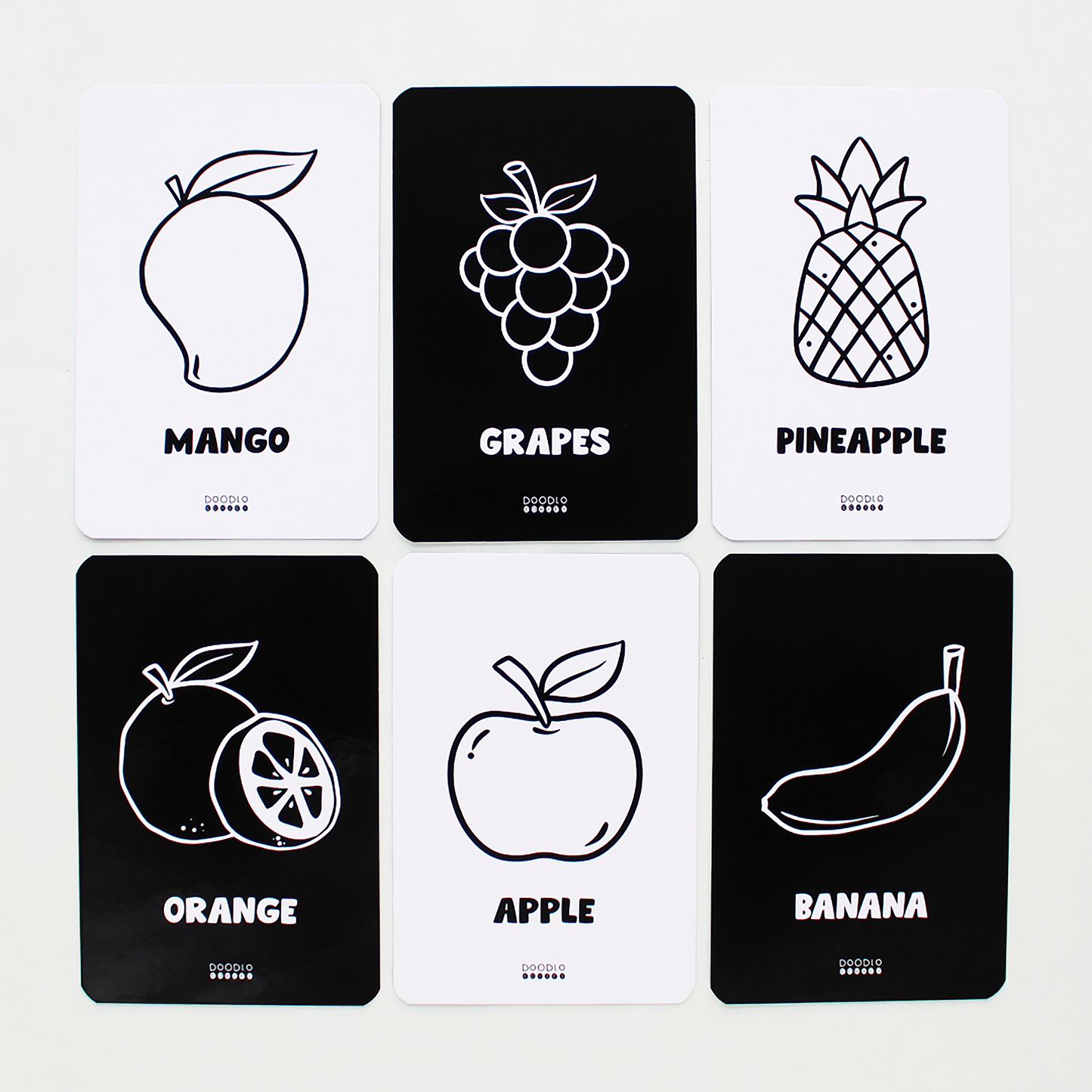
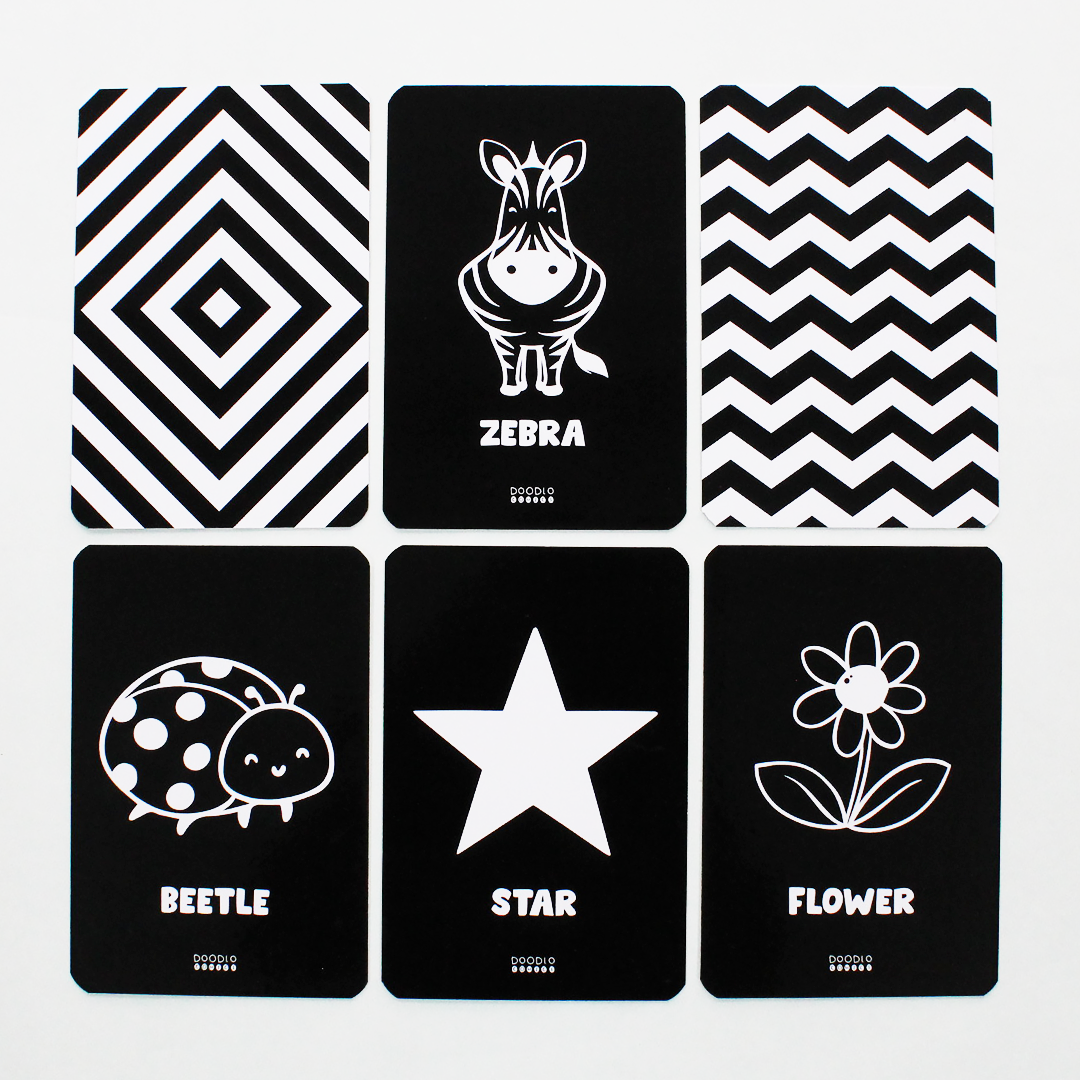
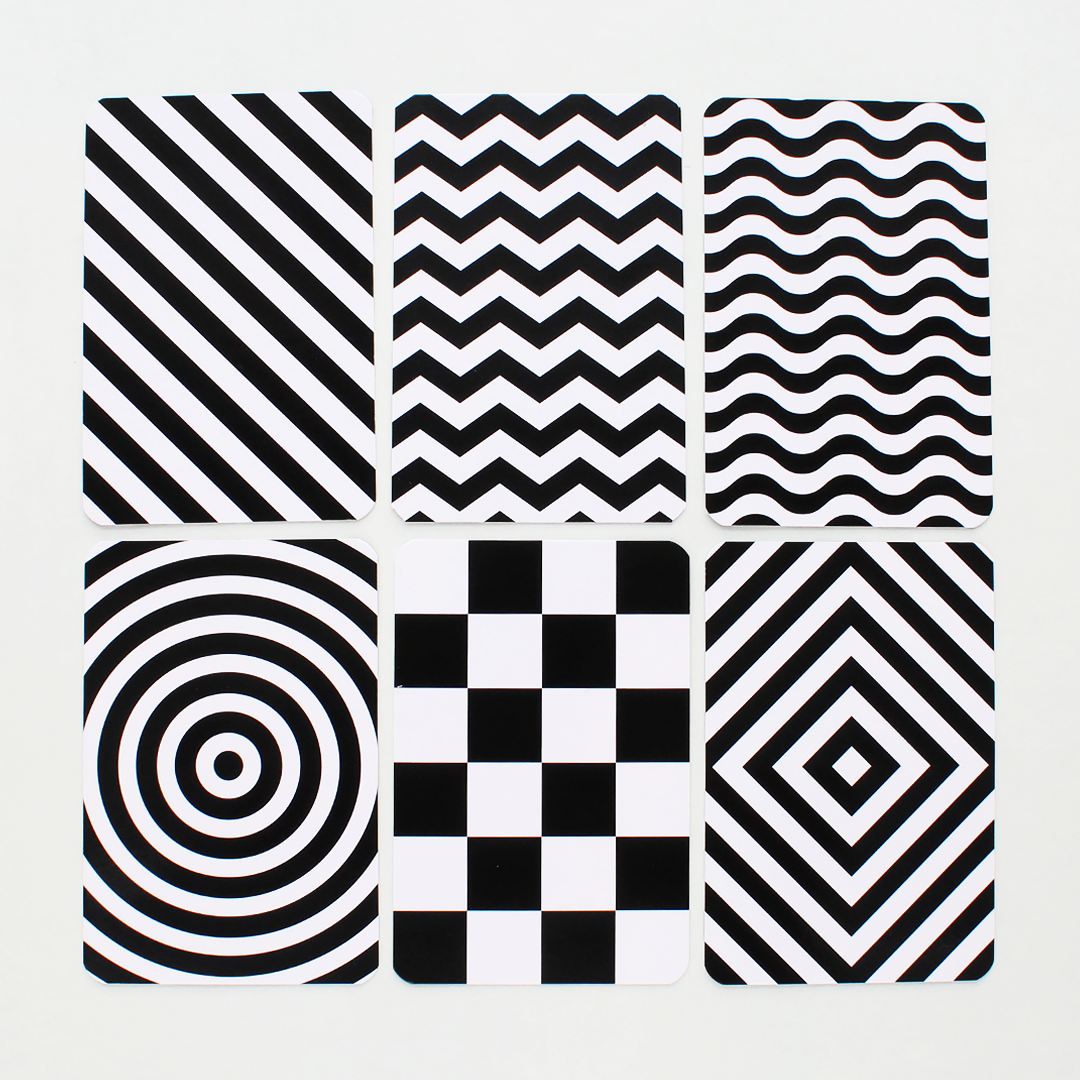
High Contrast Flash Cards for Babies & Infants
Flash cards are a versatile and engaging educational tool that has proven its value time and again in early childhood development. They combine simple visuals with key information, making them an ideal medium for introducing new concepts and reinforcing learned material. Let's look at why flash cards are used, the benefits they offer, and how they support sensory and visual development in a baby's early learning journey.

WhyFlash Cards Are Used for infants?
Flash cards are used as a practical and effective teaching aid for several reasons:
- Visual Learning: Flash cards present images and words in a clear, concise format that attracts the child’s attention. The bold colors and simple designs make it easy for young learners to focus and absorb information.
- Repetition and Reinforcement:The repetitive nature of flash card activities reinforces memory and recall. Regular exposure to the same images and concepts helps solidify learning.
- Interactive Engagement:Whether used one-on-one with a parent or in a group setting, flash cards promote interactive learning. This interaction is crucial in early childhood, where social and communication skills begin to develop.
- Flexibility: Flash cards can be adapted to suit different learning stages and subjects. From recognizing letters and numbers to identifying objects and animals, they are a versatile tool that grows with your child’s educational needs.

How to use Flash Cards for Babies?

Flashcards are a great way to boost your baby’s cognitive development. Start with high-contrast black-and-white cards for newborns, then introduce colorful ones as they grow. Hold each card about 8-12 inches away, say the word clearly, and keep sessions short, about 5-10 minutes. Engage your baby by using animated expressions and a playful tone. Repeat daily for better recognition and memory. As they grow, encourage interaction by letting them point or touch the cards. Keep it fun and stress-free!
Important Benefits of using High Contrast Flash Cards for infants
Flash cards offer a myriad of benefits that contribute to a well-rounded early education
- Improved Memory and Recall: The simplicity and repetitiveness of flash cards make it easier for children to remember key information. This method of learning supports both short-term and long-term memory retention.
- Enhanced Language Skills: By linking images with corresponding words, flash cards help build vocabulary and improve language comprehension. They encourage both receptive (listening and understanding) and expressive (speaking and articulating) language skills.
- Boosted Cognitive Development:Flash cards introduce early concepts such as colors, shapes, numbers, and letters, which are fundamental for cognitive growth. Recognizing patterns and making associations between images and words enhances critical thinking skills.


- Adaptability to Various Learning Styles: TWhether a child learns best visually, auditorily, or through hands-on experiences, flash cards cater to all these modalities. This multi-sensory approach ensures that every child has the opportunity to learn effectively.
- Increased Engagement:The interactive nature of flash cards keeps learning fun and exciting. This increased engagement helps sustain a child’s interest in educational activities, making it easier for them to absorb and retain new information.
How High Contrast Flash cards Help with Sensory Development in Early Learning
Flash cards play an essential role in supporting sensory development during early childhood, which is critical for overall brain development and learning. Here’s how they contribute
- Visual Stimulation: The simplicity and repetitiveness of flash cards make it easier for children to remember key information. This method of learning supports both short-term and long-term memory retention.
- Auditory Development: By linking images with corresponding words, flash cards help build vocabulary and improve language comprehension. They encourage both receptive (listening and understanding) and expressive (speaking and articulating) language skills.
- Tactile Engagement: Flash cards introduce early concepts such as colors, shapes, numbers, and letters, which are fundamental for cognitive growth. Recognizing patterns and making associations between images and words enhances critical thinking skills.
- Emotional and Cognitive Connections: Many flash cards feature familiar objects, animals, and everyday items. When a baby sees an image that represents something they know, it creates a connection between the visual stimulus and their existing knowledge, fostering both emotional comfort and cognitive recognition.

Frequently Asked Questions



- Visual Stimulation: Bright colors and clear images improve visual recognition.
- Auditory Stimulation: When you verbalize the card content, it enhances auditory processing.
- Tactile Engagement: Handling the cards helps develop fine motor skills and hand-eye coordination.



- Age-appropriate:Featuring simple images and basic words.
- Durable:Made from sturdy material to withstand frequent handling.
- Multi-sensory: Designed with engaging colors and sometimes varying textures to enhance sensory experiences.

- Interactive Learning: Encourage your baby to touch, point, and mimic sounds.
- Variety: Rotate between different sets of flash cards to maintain novelty.
- Positive Reinforcement: Praise and celebrate small achievements to build confidence and keep the sessions fun.

